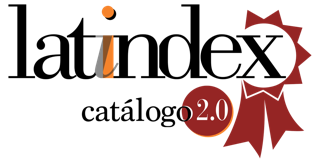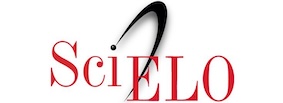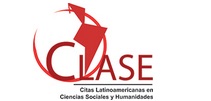Perspectivas sobre modelos cualitativos de evaluación del aprendizaje del Inglés entre alumnos universitarios latinoamericanos
DOI:
https://doi.org/10.32870/dse.v0i33.1612Resumo
En esta investigación se analizaron las perspectivas en torno a la aplicación de modelos y técnicas de evaluación cualitativa del aprendizaje del Inglés como segunda lengua (L2), los cuales sirven para dar seguimiento a los avances en la consolidación de este idioma entre estudiantes hispanohablantes de Educación Superior (ES), provenientes de varios países latinoamericanos. Se aplicó una metodología de enfoque mixto: descriptiva, a través de la cual se recolectaron primeramente las apreciaciones de 41 alumnos (17 mujeres y 24 hombres) mediante la aplicación de una encuesta de 26 ítems; después, se realizó un grupo focal con 12 de dichos estudiantes, donde se aplicó una guía con 10 preguntas. Los resultados de la encuesta evidenciaron que 75.61% de los participantes señalaron que sus profesores de Inglés sí han empleado modelos y técnicas cualitativas para evaluarles algunas actividades escolares, que han sido muy aceptadas por los alumnos (83%), aunque sigue predominando el paradigma cuantitativo para calificar el nivel de desarrollo de la L2. En el grupo focal, se encontró que la mayoría de los estudiantes (10 de 12) refieren que pocos docentes suelen dar seguimiento a sus avances de aprendizaje y retroalimentar sus actividades, por lo que consideran que es importante que se incluyan modelos cualitativos que fortalezcan sus habilidades prácticas en Inglés.Downloads
Referências
Adama, L. (2019). La motivación y el aprendizaje del idioma inglés en casa en los estudiantes de la Facultad de Odontología de la Universidad Latinoamericana Cima Tacna –2018. https://repositorio.upt.edu.pe/handle/20.500.12969/893
Arias, C.; L. Maturana; M. Restrepo (2012). Evaluación de los aprendizajes en lenguas extranjeras: hacia prácticas justas y democráticas. Lenguaje 40(1).
Bachman, L.; A. Palmer (1996). Language Testing in Practice- Designing and Developing Useful Tests. UK: Oxford University Press.
Chmolova, K. (2016). Qualitative vs. Quantitative Methods of Verification and Evaluation. Class Central. https://www.classcentral.com/report/qualitative-vs-quantitative-methods-verification-evaluation/
Creswell, J.; J. Creswell (2018). Research Design: Qualitative, Quantitative, and Mixed Methods Approaches (Fifth ed.). USA: SAGE.
Gabry?-Barker, D.; A. Wojtaszek (2014). Studying Second Language Acquisition from a Qualitative Perspective (1era ed.). Suiza: Springer International Publishing.
Galantón, M. (2013). Una aproximación a los paradigmas de evaluación cuantitativa vs evaluación cualitativa. Revista Didáctica y Educación, IV(3), 109-123.
Hernández-Sampieri, R.; C. Mendoza (2018). Metodología de la investigación. Las rutas cuantitativa, cualitativa y mixta. México: Editorial Mc Graw Hill Education.
Miller, M.; R. Linn; N. Gronlund (2012). Validity. Measurement and Assessment in Teaching. USA: Pearson.
Restrepo, M.; C. Arias; L. Maturana (2012). Evaluación de los aprendizajes en lenguas extranjeras: hacia prácticas justas y democráticas. http://bibliotecadigital.univalle.edu.co/bitstream/10893/5022/1/Evaluacion de los aprendizajes.PDF
Rodríguez, K. (2018). La evaluación en el proceso de enseñanza y aprendizaje del Inglés: enfoque socioformativo. En Vázquez-Antonio, J. (coord.). Reflexiones sobre la evaluación socioformativa. México: Centro Universitario CIFE.
Rueda, M.; M. Wilburn (2014). Enfoques teóricos para la adquisición de una segunda lengua desde el horizonte de la práctica educativa. Retos de la reforma de la educación básica. Perfiles Educativos 36(143), 21-29.
Sánchez, M. (2018). La evaluación del aprendizaje de los estudiantes: ¿es realmente tan complicada? Revista Digital Universitaria 19(6). https://www.revista.unam.mx/2018v19n6/evaluacion-del-aprendizaje-de-los-estudiantes/
Sánchez, M.; A. Martínez (2020). Evaluación del y para el aprendizaje: instrumentos y estrategias. México: UNAM. https://cuaieed.unam.mx/descargas/investigacion/Evaluacion_del_y_para_el_aprendizaje.pdf
Downloads
Publicado
Edição
Seção
Licença
Copyright (c) 2025 Universidad de Guadalajara

Este trabalho está licenciado sob uma licença Creative Commons Attribution-NonCommercial 4.0 International License.
Esta obra está bajo una licencia internacional Creative Commons Atribución-NoComercial 4.0.
Una vez que los manuscritos son aceptados por los evaluadores para ser publicados, los autores deberán de suscribir una carta de cesión de derechos en favor de la Universidad de Guadalajara para la edición, publicación y difusión de su obra. Ya que sea notificada la publicación de su manuscrito, el editor de la revista le enviará un correo electrónico con el formato de la carta de cesión de derechos.















